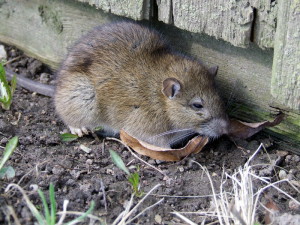 The common rat (sewer rat or Norwegian rat) is larger than the black rat and is not as frequent in the region. In human settlements, it usually claims basements of houses, warehouses, sheds and barns. In the summer, it also often migrates to open spaces, commonly close to water. This rat predates on frogs, small vertebrates and invertebrates. Thus, the nutrition of the species combines plant and animal food.
The common rat (sewer rat or Norwegian rat) is larger than the black rat and is not as frequent in the region. In human settlements, it usually claims basements of houses, warehouses, sheds and barns. In the summer, it also often migrates to open spaces, commonly close to water. This rat predates on frogs, small vertebrates and invertebrates. Thus, the nutrition of the species combines plant and animal food.
The rats are extremely prolific. They also deal great damage to people by their digging, gnawing, eating and spoiling food stock. Besides, similar to some other rodents, rats are a source of dangerous diseases of men and domestic animals. Combatting rats in human communities is usually held via preventive measures – sanitary hygienic and technical: blocking access to food supplies and nesting spots – and direct control: mechanical traps and poisons. Sometimes, biological measures are used – the rats are infected with murine typhus agents neutral to humans and domestic animals.
/ * The photos at lake.peipsi.org are cross-posted from commons.wikimedia.org and are used for familiarization purposes only. No commercial use of the photos is allowed. For more information about to use the photos see the originals on commons.wikimedia.org. /


